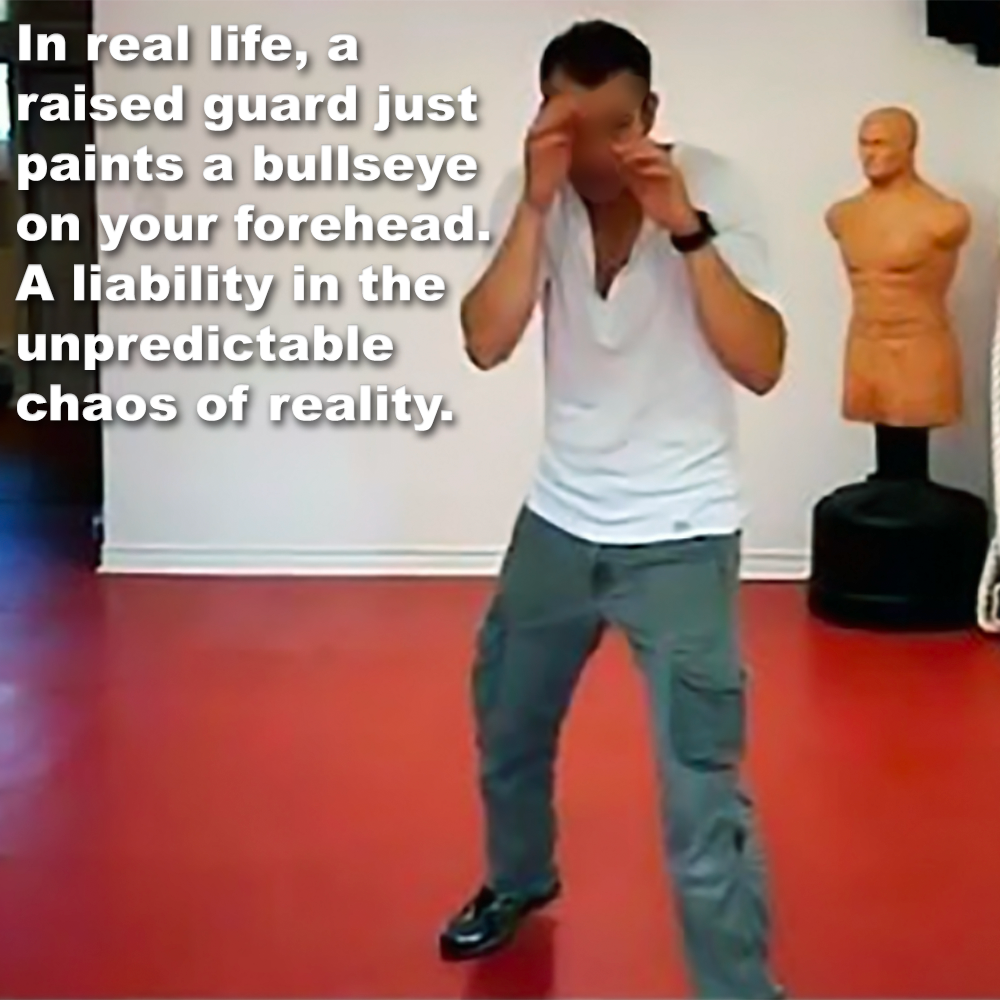
Self-protection or inviting the fight?
.
In any sporting fighting arena, a tight guard is gospel. But in the real-world where self-defense maybe necessary, it could be a bad idea, both tactically and legally. Why? Because self-defense is NOT a controlled match. It’s messy, chaotic, and often over before you know it.
.
It should be understood that guards are normally used when two people agree to a consensual fight, either in the dojo or in competition, testing one another at a distance.
.
In the realm of self-defense however, your primary objective is to avoid confrontations altogether rather than actively seeking ‘a fight’. The preferred strategy is to proactively strike first when avoidance is not viable, followed by a swift retreat.
.
Should escape not be immediately feasible, the focus should then shift to asserting dominance until a safe opportunity to escape arises. It’s crucial to emphasize that your intention is not to engage in combat but to protect yourselves defensively.
.
Raising your hands in a perfect guard you lose the initiative, you concede control and surprise, putting yourself at the attacker’s mercy, practically begging him to hit you again.
.
You choose to limit your options, to fight, ignoring potentially safer escape routes. A raised guard telegraphs your fear, and invites the attacker to strike.
.
Remember that self-defense is reactive, not reciprocal. Forget “back and forth” exchanges. It’s about survival, not winning points.
.
Both hands should be actively controlling, clearing paths, or locating threats. Passive guards leave you vulnerable. If you’re far enough away, escape is the priority, not a guard.
.
Sparring uses guards to practice controlled fighting. But self-defense drills need dynamic hand use, not static defenses. Remember, a “live” attack scenario isn’t about fair exchanges. It’s about stopping harm as quickly as possible.
.
In a real fight, by the time you have put your hands up and reacted with a guard, you could be hit, hurt or incapacitated, and not everyone will want to fight with just bare hands. A sharp pointy object doesn’t care about your precious guard. It only cares about finding flesh.
.
Self-defense requires proactive control, not waiting for blows, testing your opponent. Real fights are quick, chaotic, and brutal. Think punches, bites, grabs, and weapons. It’s messy, unpredictable. And waiting in a guard puts you in the center of it all.
.
Don’t give the attacker an inch. Understand the difference between consensual combat and real-world self-defense. Ditch the guard mentality and focus on dynamic control, escape, and proactive defense. Your life could depend on it.
.
And instructors should emphasize this crucial difference to students. Include in your training the reality of street encounters, not just tournament matches or promised exchanges. Make your self-defense classes about survival, not technical prowess.
.
Remember, a guard is a tool, not a universal solution. Choose the right tool for the job, and in self-defense, that job is often not a fight, but survival.
.
While a raised guard may offer you a sense of security in the controlled realm of the dojo, in real life, a raised guard just paints a bullseye on your forehead, inviting the fight. A liability in the unpredictable chaos of reality.
.
.
